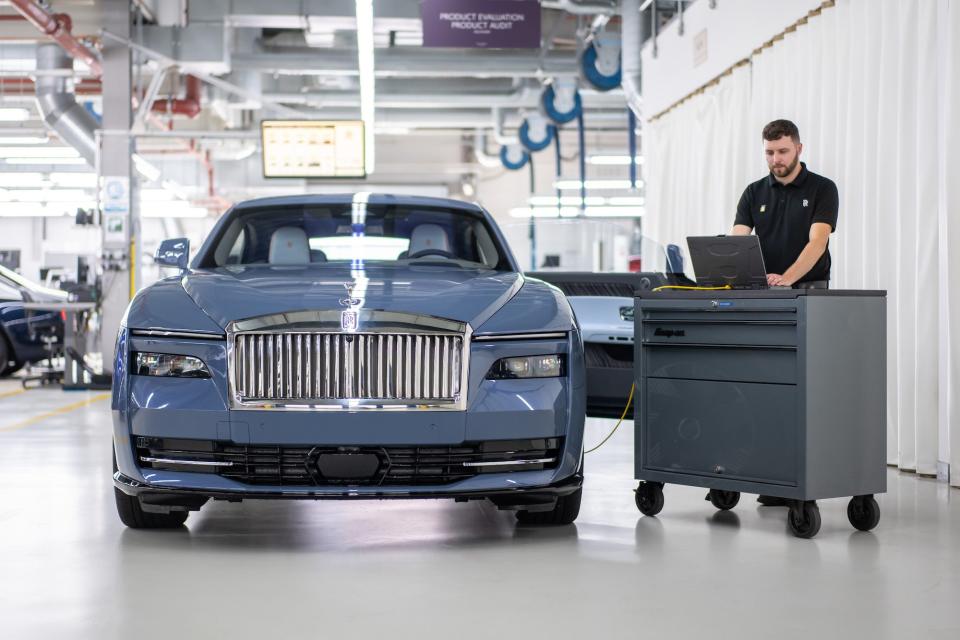How Rolls-Royce built its first EV, the Spectre
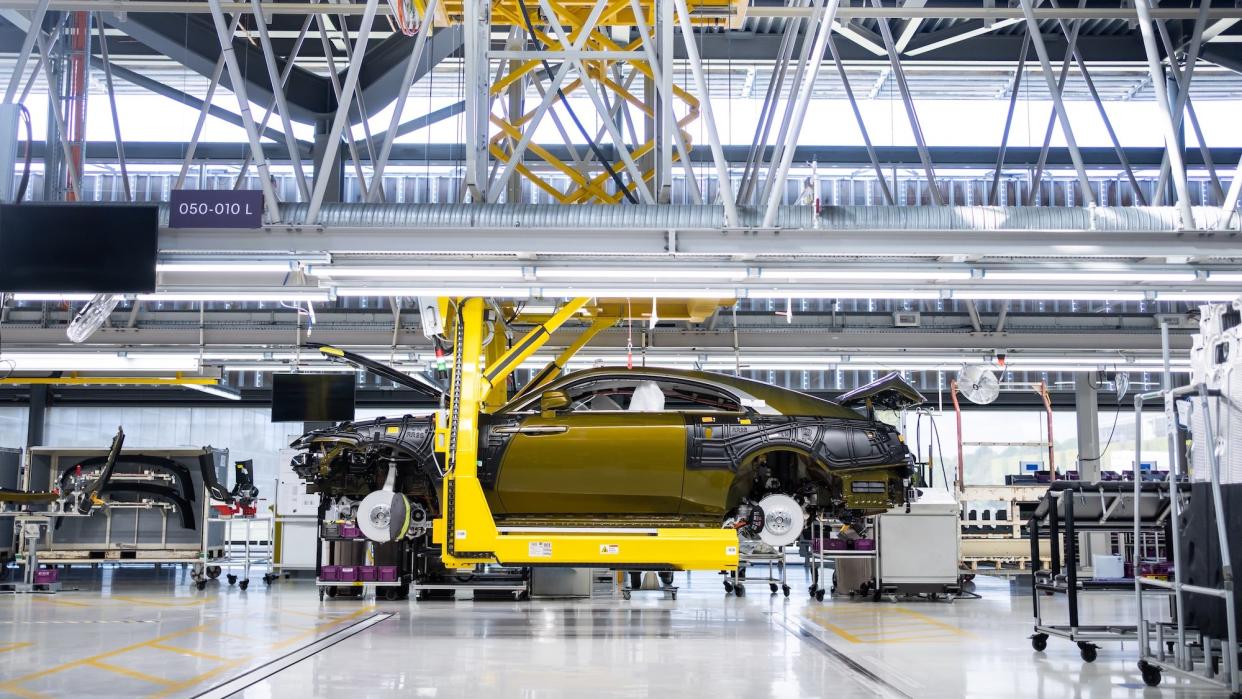
- Oops!Something went wrong.Please try again later.
- Oops!Something went wrong.Please try again later.
One of the seven wonders of the automotive world is the Rolls-Royce V12 engine. It’s quiet, incredibly powerful, and acceleration is so smooth it’s EV-like, especially compared to the obvious gear shifts that take place in most internal combustion vehicles. Rolls-Royce drivers buy the British superluxury cars for the ethereal drive, not the look-at-me roar that emanates from a Lamborghini, Ferrari, or Aston Martin.
And now with the brand’s first EV, the Spectre, Rolls-Royce delivers its signature magic carpet ride with an all-electric powertrain. The brand calls it “waftability,” compensating the inertia of the car to present the feeling of flying or floating. With a low center of gravity partly aided by a well-crafted layer cake platform, the Spectre may ruin you for all other EVs if you take it for a spin.
This is how the legendary automaker created an EV worthy of its heritage.
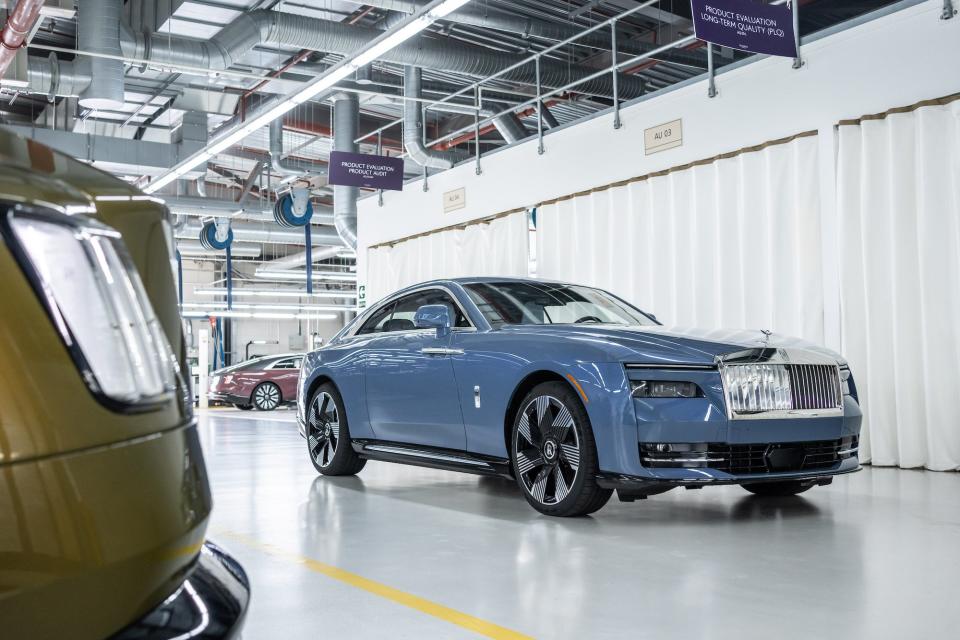
Foreshadowing the EV future
While it may seem incongruous that Rolls-Royce could build an EV that elicits the same feelings as its gas-powered elders, the truth is that electric vehicles have been in the brand’s DNA the whole time. More than a century ago, founder Charles Rolls famously predicted the future importance of electric powertrains; his business partner Sir Henry Royce was an electrical engineer by trade.
For the Spectre, it was important that this was “a Rolls-Royce first and an electric car second,” executives emphasized. The EV starts with a proprietary aluminum spaceframe platform hinging on four fixed points, one at each corner. A “layer cake” approach gives the Spectre a low coefficient of drag, which positively affects the overall aerodynamics and range.
Under your feet is the plush, carpeted interior floor, which sits atop the wiring and climate control pipework. Underneath that is a flat battery pack that weighs more than 1,500 pounds, and that’s sheathed in a smooth battery under-casing. Even with all those layers, the Spectre is only two centimeters higher than the gas-powered Rolls-Royce Phantom coupe. That’s a feat in itself.
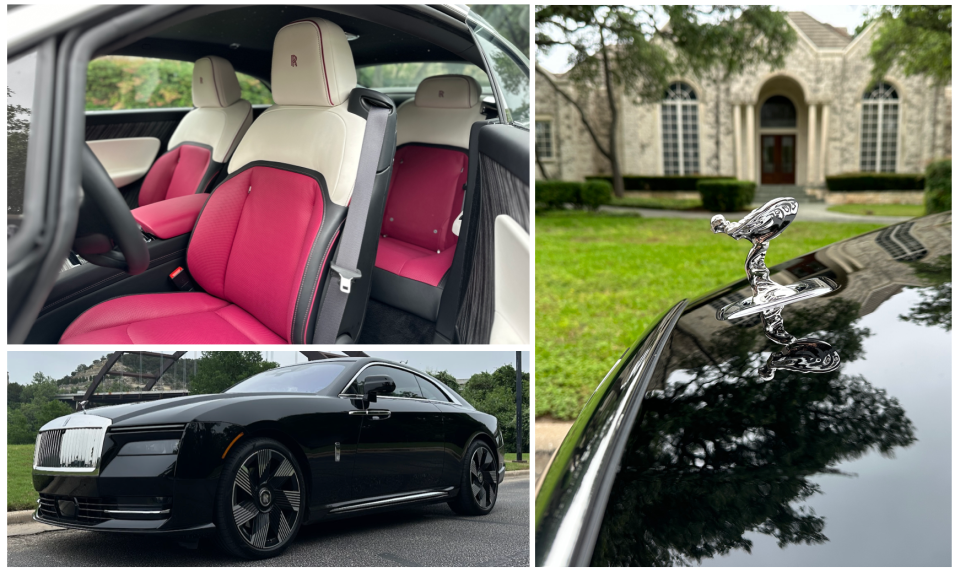
“As we enter this transition to the future, we chose a super coupe,” says Rolls-Royce North America President Martin Fritsches. “Spectre’s size and design are the spiritual successor to the Phantom coupe. We wanted an emotional and alluring model to show the future of Rolls-Royce.”
Squeezing electrical components into a two-door car
This is a long, sleek car that’s the same number of feet stem to stern as a massive GMC Hummer EV: 18 feet. Its 102 kilowatt-hour, 400-volt battery pack is derived from its parent company, the BMW Group, which charges slower than EVs by Kia and Hyundai’s 800-volt version.
On the flip side, the higher-voltage system would have added more weight and complexity that would have affected performance and weight distribution. Squeezing the components into a two-door model was a challenge for the engineering team, but it made sense for the brand.
“It could have been easy for us to electrify an SUV, or a saloon,” says Dr. Mihiar Ayoubi, the chief engineer to launch the Spectre and now BMW Group senior vice president. “But it’s challenging to deliver such a beautiful coupé silhouette.”
The Spectre includes a 23-inch wheel option, which results in slightly less range than the 22-inch wheels. It also boasts the largest coach doors (which open out from the front instead of the back of the door) in the Rolls-Royce lineup at 1.5 meters or 4.92 feet. The doors open to roughly 90 degrees for easy in and out for all four seats, and allows access to the signature umbrellas embedded in the frame.
In real time: highway driving
On a busy Friday afternoon, traversing interstate 35 between Dallas and Austin, Texas is unpredictable. For one-pedal driving, the Spectre includes regenerative braking, which the brand calls “B mode” and is activated from the gearshift stalk on the steering wheel.
Rolls-Royce refers to it as braking recuperation, not regeneration, and it takes a little practice to use it in stop-and-go traffic smoothly, like any other EV braking function. The adaptive cruise control is even better, automatically adapting to traffic in front of the car with cameras and sensors to slow down and speed up accordingly.
When it’s rolling along at speed, the Spectre lives up to its ghostly name as it floats above the asphalt. Even on wet roads in a rainstorm, the EV feels planted, which can partially be attributed to its 6,300-pound mass. It eats curvy roads for brunch and maintains its British poise even when hard braking is required.
The biggest challenge of driving this electric car is not the powertrain itself or even the range, which is slightly below average. It’s the charging infrastructure, which is spotty and often unreliable. During our testing, which happened to take place during the solar storm that confused GPS systems around the globe, it was difficult to locate the charging station. Once we located a DC fast charging station, a technician was servicing one of the ports and the one we used was operating at about half its power. Later charging tests showed that the Spectre could charge up quickly and easily, especially at EVGo stations that require just a credit card and not an app.
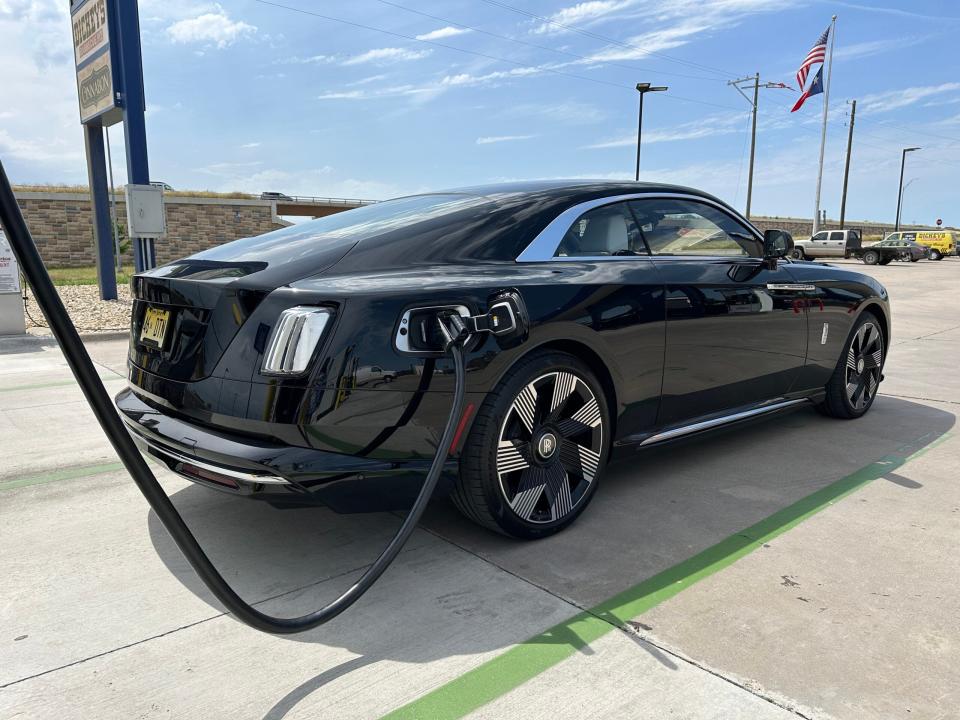
Bearing a price tag that approaches $500,000, the Rolls-Royce Spectre is a luxury most Americans can’t afford. But its technology is aspirational and will trickle down through the BMW Group and on to other automakers in the long run, practically guaranteeing the improvement of the segment for generations to come.
